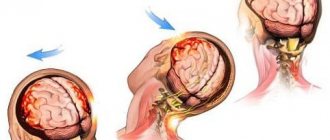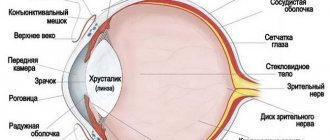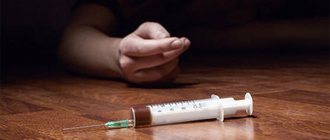A penetrating wound is a wound that affects the cavities of the human body: chest, head, abdomen, joint. The lesion is characterized by the entry of a sharp long foreign object into these areas: a knife, an awl, a nail, a screwdriver.
A penetrating wound to the chest can be obtained when exposed to heavy objects inflicted at high speed - bullets, shell fragments, mines, stones, etc. The wound opening has an entrance and exit, or there is only an entrance opening.
Brief first aid instructions
A victim with a penetrating wound to the chest needs urgent assistance, since as a result of the damage, the tightness of the internal cavity, where important organs for life are located, is broken, this condition is dangerous.
First aid for a penetrating chest injury includes the following:
- First you need to call an ambulance to send a medical team to the scene,
- If a foreign object is not sticking out from inside, cover the inlet hole with your palm,
- In case of a through wound, you need to close the entry and exit openings,
- If the damaging object remains in the wound, it is fixed with thick fabric rolls, then a bandage is applied,
- Find any airtight material to seal the wound; secure the material with a bandage or plaster,
- Place the victim in a semi-sitting position,
- If the victim has lost consciousness, he should be laid horizontally with his head turned to the side,
- Apply an ice pack or a bottle of cold water to the wound area,
- Wait for the medical team, or deliver the victim to a medical facility on your own.
First aid for a stomach wound
Abdominal gunshot includes three pathologies:
- Shock;
- Bleeding;
- Perforation of hollow organs (stomach, bladder, intestines).
If organs have fallen out, they cannot be put back into the abdomen; they are covered with fabric rolls, then bandaged. The peculiarity of the bandage is that it must always be kept wet; for this it needs to be watered.
To reduce pain, cold is applied over the bandage to the wound. When the bandage is soaked through and blood begins to ooze out, the bandage is not removed, but a new bandage is applied over the old one.
All abdominal gunshots are considered to be primarily infected; antiseptic treatment of the gunshot wound and primary surgical treatment must be performed, which is done in the first hours after injury. These measures provide a better future prognosis.
When the abdomen is wounded, parenchymal organs, such as the liver, are sometimes affected . The victim experiences shock; in addition to blood, bile leaks into the abdominal cavity, and biliary peritonitis occurs. The pancreas, kidneys, ureters, and intestines are also affected. Often, nearby large arteries and veins are damaged along with them.
After first aid is provided, the victim is taken to a medical facility, where he is provided with qualified and specialized medical care.
Victor Systemov – expert of the 1Travmpunkt website
A wound that results in projectile fragments, bullets, and shot entering the human body is called a gunshot wound. Such injuries are classified as fatal, so the person must be immediately taken to a medical facility.
First aid for a gunshot wound is provided according to the general algorithm, regardless of the striking object that caused it. However, there are minor differences in emergency actions depending on the location of the injury.
Signs of penetrating chest injury
A penetrating wound in the chest has an entry hole on the chest, back, side surface, or in the area of the collarbone. Such a lesion is always deep, more than 4 cm.
If you move the edges of the damage to the sides, it is impossible to clearly see the bottom of the affected surface, and the entrance wound may be small.
You should not try to stick your finger inside the wound to measure the depth; such actions expand the wound canal even further, and the situation only worsens.
A penetrating wound has the following differences:
- The wound surface breathes - when the chest moves, a whistle or noise of incoming air is heard,
- The air comes out of the wound along with the blood, which foams,
- The victim exhibits signs of respiratory failure - lips and skin turn blue, cold sweat appears, the pulse quickens, breathing becomes difficult, shortness of breath appears, and the veins in the neck swell.
When atmospheric air enters the chest cavity, the lung on the affected side collapses, causing shortness of breath.
The internal organs shift with each inhalation and exhalation, either to the right or to the left. The heart and thoracic aorta are mainly affected by such fluctuations; their oscillation causes heart failure.
Heart wounds
In addition to soft tissues, arteries and blood vessels, the injury can affect both the lining of the heart and the organ itself. This injury is very serious, as it can lead to the shutdown of this organ, as a result of which the person dies.
Basically, as a result of injury to an organ such as the heart, the atrium or ventricles are damaged; in rare cases, only the lining of the organ is damaged. The wound is very dangerous due to the bleeding in the form of a fountain, and the blood fills nearby organs.
The following are noted: ruptures of all layers of heart tissue (death at the scene); ruptures of muscle fibers with hemorrhages into the myocardium, under the epicardium, endocardium, partly into the pericardial cavity - clinically assessed as bruises (in patients with cardiovascular diseases and in the elderly, bruises can be accompanied by the development of myocardial infarction), concussions (accompanied by functional disorders of cardiovascular activity) ; closed wounds of the heart with fragments of ribs and sternum.
Heart damage is often accompanied by hemopericardium, hemothorax, pneumothorax, etc. Diagnosis is often difficult; the symptoms are inconsistent, there are no direct symptoms. Signs of heart damage may appear hours or even days after the injury. Anamnesis and a thorough analysis of the mechanism and characteristics of the injury are important.
Symptoms
Pain in the heart area; can be relieved by taking nitroglycerin, validol, analgin, or only narcotic drugs. There may be no pain immediately after the injury. Severe weakness, headache, shortness of breath, dizziness; symptoms are not constant. The skin is pale (sometimes cyanotic); possible hematomas, abrasions in the heart area (not permanent) Palpation of the skin and subcutaneous tissue is sometimes painful. The pulse is increased.
ECG: wave voltage is reduced; the T wave is enlarged, flattened, biphasic (or inverted), the ST segment is decreased (or increased), the QRS complex is deformed; rhythm and conduction disturbances. A picture of myocardial infarction is possible.
Accompanied by massive bleeding - external or pericardial (danger of cardiac tamponade!)
Symptoms
Anxiety, fear of death. The skin is pale. Hemopericardium. Acute cardiac failure. Acute respiratory failure.
Step-by-step first aid
When an accident occurs and a person is wounded in the chest area with penetration, you need to call an ambulance, and then urgently begin measures to provide first aid.
First you need to reassure the victim, explain your manipulations, and instill confidence that clear actions will definitely help him. In this case, the person should be prohibited from talking and taking deep breaths.
When the victim has lost consciousness, he should be laid on a hard surface, his chin raised up, and his head turned to the side - such actions ensure better access of air to the lungs, and vomit, if any, will come out freely.
Further actions depend on the condition of the wound:
- When an object remains inside the chest cavity, it cannot be pulled out so as not to provoke severe bleeding and cause additional damage to internal organs,
- If the protruding object is too long, try to shorten it, cut it, break it off, when nothing can be done, leave everything as is.
The protruding object must be fixed motionless; this can be done in two ways.:
- The protruding object is covered with thick rolls of fabric or bandage on both sides to prevent any movement of the object. The structure must be secured with adhesive tape, gauze bandage,
- Make a loop from the dressing material, throw it over the protruding part of the object, wrap it tightly around it several times, and tie the ends. Such a structure creates fixation of the object; when the object is too long and heavy, there should be many circular tours.
Fixation is done to ensure that the object does not move inside the cavity. Any movement injures the organs even more, which worsens the condition of the victim and the further prognosis of penetrating injury.
If there is no foreign object in the wound, the entrance of the hole should be covered with the palm of your hand to prevent atmospheric air from entering the chest cavity.
When there is also an outlet, it must also be closed . The palms should not be removed from the wound until the ambulance arrives; their first aid kit contains an individual dressing package for bandaging penetrating wounds.
If emergency assistance for a penetrating chest wound to a victim is provided by 2 people, you need to find a suitable waterproof material, then apply an occlusive dressing to the person to seal the wound.
Blunt trauma to the mammary gland
A mammary gland bruise (right or left) is a blunt injury or closed injury to the soft tissue of the chest. Such damage occurs during sports; girls involved in strength martial arts, artistic gymnastics, and cycling are especially often affected.
You can injure your chest:
- in case of an accident;
- during a domestic quarrel;
- when hitting a door frame as a result of dizziness;
- while playing with children;
- and even just when falling on the street.
Fortunately, mammologists report blunt breast injuries in women in only 1-2% of all requests for help. And this despite the open location of the organ. By the way, you need to go to a mammologist if you have suffered an injury in the mammary gland (right or left).
What happens with a closed injury?
Under the influence of a traumatic factor (impact, fall), the vessels of the mammary gland are destroyed and blood enters the tissue from the bloodstream, forming a hematoma (bruise).
If the bruise is minor, the vessels may remain intact or the bleeding will stop quickly and spontaneously with the formation of a small superficial hematoma. If there is a large area of damage or a strong blow, the bruise will be large and painful.
Considering that the mammary glands are well innervated, damage is accompanied by pain up to a state of shock. Shock often develops when the nipple and areola area are bruised, despite the fact that the tissues of the organ are very resistant to direct injury.
Symptoms of injury
For blunt breast trauma, you:
- feel severe pain;
- notice a change in breast volume, swelling, redness of the skin, thickening, and then bruising;
- You will find bloody discharge from the nipple (due to injury to the milk duct).
Injuries are accompanied by superficial and deep hematomas. If it seems to you that the blow did not rupture the blood vessels or cause a bruise, consult a doctor. Perhaps the hematoma is hidden deep in the tissues.
Consequences of a chest bruise
Small hematomas often resolve, like any superficial bruises, without consequences or medical intervention, but you should not expect that “everything will resolve.” If you do not contact a mammologist in a timely manner and there is no adequate treatment, a breast injury can be complicated by:
- abscess (when pathogenic bacteria penetrate into the contents of the hematoma, blood is an excellent environment for the proliferation of microorganisms);
- fat necrosis of tissue in the bruise area;
- deformation of the mammary glands due to the replacement of necrotic (dead) tissue with scar.
Please note that the hematomas themselves never become malignant, but most patients with breast cancer (breast cancer) have a history of bust injuries. Such damage is especially dangerous for patients with nodular mastopathy and breastfeeding.
How is a sealing bandage made?
Procedure for applying a sealing bandage:
- Cover the damaged surface with gauze folded in several layers or with a clean cloth,
- Put any waterproof material on top - polyethylene, a piece of bag, oilcloth, soft leather,
- Place a thick layer of cotton wool on top, do the same with the second hole,
- Secure the entire structure with a bandage around the body, securing both holes at once. You can secure the sealing material with adhesive tape or adhesive tape.
After the bandage is applied to the victim, support should be placed under his back to achieve a semi-sitting position, with his legs bent at the knees. If possible, put ice on the bandage.
The victim should remain in a semi-sitting position until the ambulance arrives.
If the team’s arrival is expected no earlier than half an hour later, it is necessary to transport the victim to a medical facility on your own.
Consequences
There are several of the most dangerous consequences of chest injuries:
- Pneumothorax (accumulation of a large amount of air in the pleural cavity).
- Hemothorax (blood entering the pleural cavity).
- Emphysema of the mediastinum (begins to put pressure on large veins).
- Traumatic suffocation.
- Heart bruise.
- Cardiac tamponade (accumulation of blood in the pericardium as a result of its damage by rib fragments).
Symptoms
The chest, despite its rigid structure, is more often susceptible to trauma than any other part of the bone skeleton. A careless fall, a sharp blow, an illness or an emergency situation are quite capable of disrupting the integrity of the costal arch and sternum, leading to multiple problems with the respiratory and cardiovascular systems.
In order to diagnose the onset of serious failures, you need to know the symptoms of damage to the walls of the sternum:
- Pain that occurs every time you take a deep breath or exhale.
- The cough is chesty and very strong, with a whistling sound.
- Hemorrhage. If there is internal bleeding and inflammation of the internal organs, the cough is quickly supplemented by sputum mixed with blood.
- Deformation of the bone corset. If there was a fracture of the vaults.
- The development of pneumothorax - that is, excessive accumulation of air in the pleural cavity. Its signs are gurgling, whistling, hoarse tones when inhaling or exhaling. The main danger of this condition is the development of acute respiratory failure, asphyxia, and atony.
- Increase in body temperature to 38-39 degrees.
- Fever.
- Pulmonary edema. It is manifested by the appearance of white foam near the mouth in combination with impaired respiratory function, rapid heartbeat, a decrease or sharp increase in blood pressure, dizziness, weakness, and nausea.
Treatment
Necessary primary medical care is to find something to treat the open wound, apply a bandage with a thick layer of sterile cotton wool, covered with a bandage, the edges should be several centimeters larger than the diameter of the injury. Stopping the flow of air into the tissues using a special patch will also help.
Before transporting the wounded, painkillers should be administered:
- morphine;
- pantopon, etc.
For bullet wounds, shattered parts or severe bruises should be removed surgically. This will help prevent sepsis and further tissue decay.












